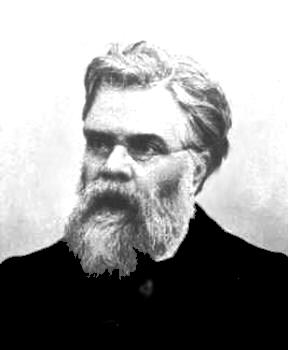Lemoine has been called the originator of an enormous surge of interest in triangle geometry that took place during the second of the three waves.

|
In order to appreciate Emile Lemoine's role in the subject of triangle geometry, it is helpful to start with a bird's eye view of the history of the subject. First, there was a wave of ancient Greek developments, as recorded in Euclid's Elements. The second wave began with the discovery of the Fermat point and continued into the early twentieth century. The third wave, now rolling, dates from the advent of computers.
Lemoine has been called the originator of an enormous surge of interest in triangle geometry that took place during the second of the three waves. |

|
Lemoine was graduated from the École Polytechnique, Paris, in 1860. After teaching there for a few years, he became a civil engineer and worked his way up to the position of chief inspector for the department of natural gas in Paris. As an engineer, Lemoine continued his activities in mathematics, especially geometry, and in music. He was instrumental in the founding of a musical group, "La Trompette," for which Camille Saint-Saëns composed several pieces.
Lemoine did not publish original mathematical results after 1895, but in 1894, he helped C. A. Laisant establish the journal Intermédiare des mathématiciens, and he served as its editor for several years.
Many of Lemoine's contributions can be found in
Nathan Altshiller Court, College Geometry, second editon, Barnes & Noble, New York, 1969.
In addition to Lemoinian Geometry (14 pages in Chapter 10), Court presents a section of Historical and Bibliographical Notes, in which he writes:
In 1873, Lemoine read a paper before the Association Française pour l'Avancement des Sciences [meeting in Lyon] entitled "Sur quelques propriétés d'un point remarquable du triangle." The paper appeared in the Proceedings pp. 90-91, and was also published in [Nouvelles annales de mathématiques] ... The paper may be said to have laid the foundations not only of Lemoinian Geometry, but also of the modern geometry of the triangle as a whole.Court goes on to explain that the basic point of Lemoinian geometry was called by Lemoine the center of antiparallel medians. In 1884, J. Neuberg gave it the name Lemoine point. However, the point had been earlier noted by LHuilier in 1809, Grebe in 1847, and others prior to Lemoine's extensive discussion in 1873. For awhile, the point was called the Lemoine point in France and the Grebe point in Germany. In 1883, M. d'Ocagne introduced the term symmedian for a line obtained as the reflection of a median of a triangle about the corresponding angle bisector (i.e., Lemoine's "antiparallel median". As the LHuilier-Lemoine-Grebe point is the point of concurrence of the three symmedians of a triangle, the geometer Robert Tucker (as in Tucker circles) introduced yet another name for the point: symmedian point (link below). This name is now widely accepted.
Fifteen years after the momentous 1873 paper, Lemoine presented another distinctive development to the Association Française pour l'Avancement des Sciences [meeting in Oran, Algeria]. He considered five elementary constructions involving a compass and straightedge; these were "elements" in the sense that every Euclidean construction could be performed through some ordered list of applications of the five elementary constructions. One objective of Lemoine's system was to measure the "simplicity" of a construction as the length of the ordered list. The system is known as Geometrography. Under this heading, a listing of the five elementary constructions and references is given in the CRC Concise Encyclopedia of Mathematics (Eric W. Weisstein, 1999), pp. 733-4.